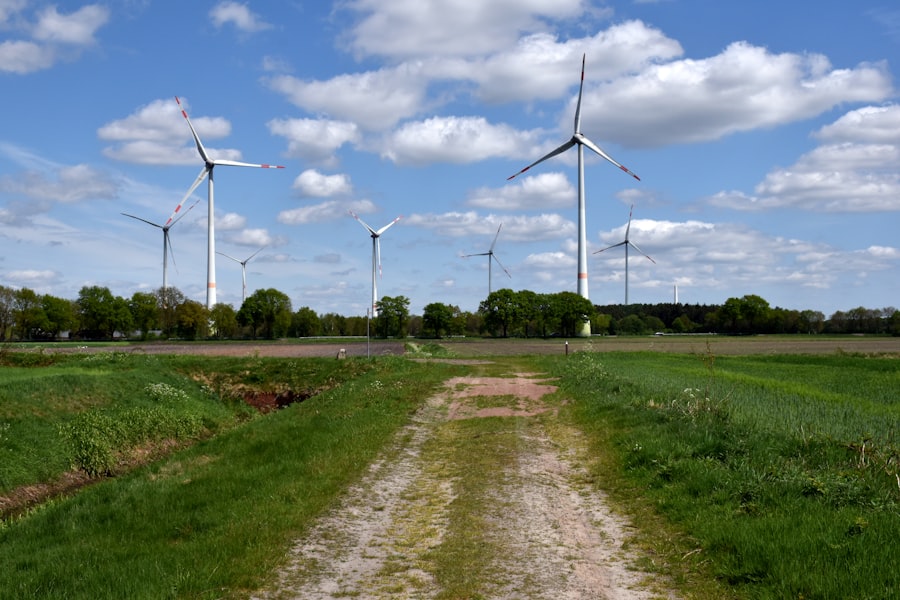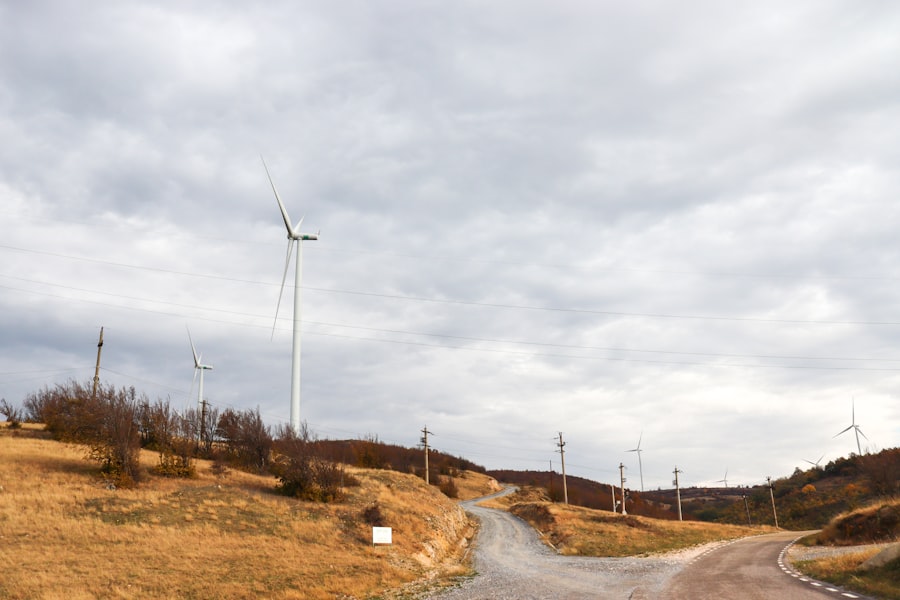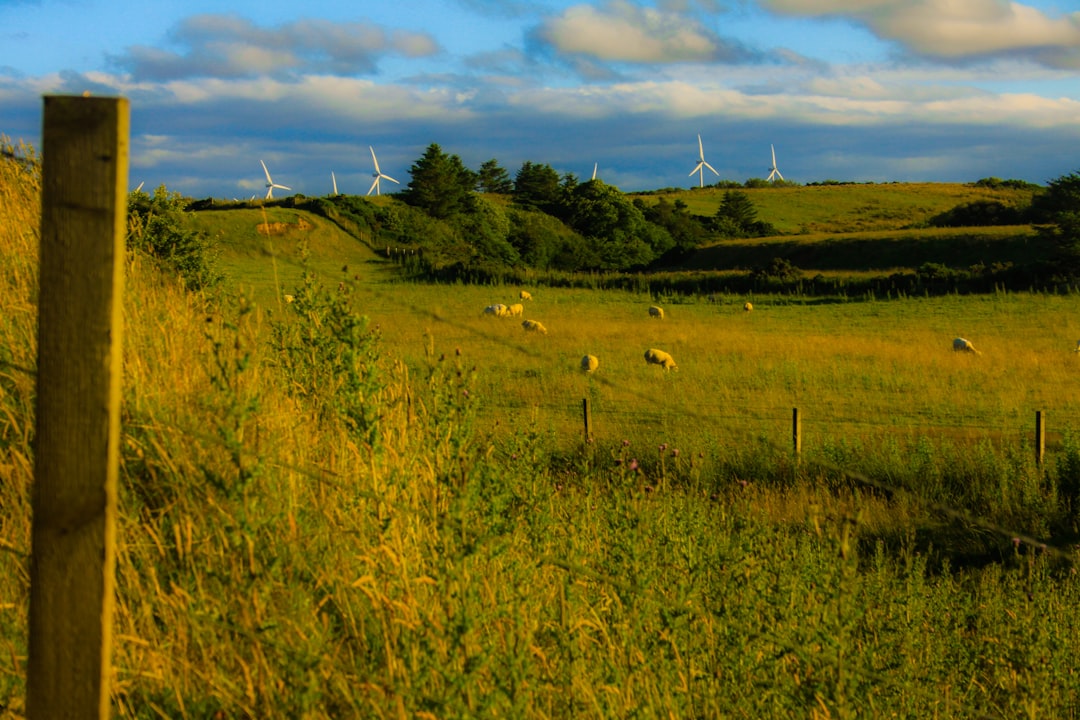Wind energy has emerged as a pivotal player in the quest for sustainable and renewable energy sources, particularly in rural communities. These areas, often characterized by vast open spaces and favorable wind conditions, are uniquely positioned to harness the power of wind. The transition to wind energy not only addresses the pressing need for cleaner energy but also offers a multitude of benefits that can significantly enhance the quality of life for rural residents.
As the world grapples with climate change and the depletion of fossil fuels, wind energy stands out as a viable solution that aligns with both environmental goals and economic development. The adoption of wind energy in rural areas is not merely a trend; it represents a fundamental shift in how communities can generate power and sustain their economies. With advancements in technology and increasing investments, wind farms are becoming more common sights on the rural landscape.
This shift is not just about generating electricity; it encompasses a broader vision of community empowerment, economic resilience, and environmental stewardship. As rural communities embrace this renewable resource, they are not only contributing to a greener planet but also paving the way for a more prosperous future.
Key Takeaways
- Wind energy provides a sustainable and renewable source of power for rural communities.
- Economic benefits of wind energy include increased local investment and job creation.
- Wind energy projects can provide employment opportunities for local residents.
- Land lease and property tax revenue from wind energy projects can benefit rural communities.
- Community investment and local ownership of wind energy projects can strengthen rural economies.
Economic Benefits of Wind Energy for Rural Communities
The economic advantages of wind energy for rural communities are substantial and multifaceted. First and foremost, the establishment of wind farms can lead to significant financial influxes into local economies. These projects often require substantial capital investment, which can stimulate local businesses and create a ripple effect throughout the community.
From construction to maintenance, the presence of wind energy projects can invigorate local economies by providing opportunities for various sectors, including manufacturing, transportation, and services. Moreover, wind energy can help stabilize energy costs for rural residents. By generating electricity locally, communities can reduce their dependence on external energy sources, which are often subject to volatile market fluctuations.
This stability can lead to lower utility bills for residents and businesses alike, allowing them to allocate resources toward other essential needs. Additionally, the long-term nature of wind energy projects means that these economic benefits can be sustained over time, providing ongoing support for local economies.
Job Creation and Employment Opportunities

One of the most significant impacts of wind energy development in rural areas is job creation.
This demand for skilled labor can provide new employment opportunities for local residents, helping to reduce unemployment rates and stimulate economic growth.
Furthermore, many wind energy companies prioritize hiring locally, which means that the benefits of job creation are felt directly within the community. In addition to direct employment opportunities, the growth of the wind energy sector can also lead to the emergence of ancillary jobs in related industries. For instance, increased demand for maintenance services can create positions in repair and servicing companies, while local suppliers may see a boost in business from wind farm operations.
This interconnectedness fosters a more robust job market and encourages workforce development initiatives that equip residents with the skills needed to thrive in this evolving industry.
Land Lease and Property Tax Revenue
| Year | Land Lease Revenue (in millions) | Property Tax Revenue (in millions) |
|---|---|---|
| 2018 | 45 | 120 |
| 2019 | 50 | 130 |
| 2020 | 55 | 140 |
Wind energy projects often involve leasing land from local farmers or landowners, which can provide a significant source of income for those individuals. Land leases typically offer annual payments that can supplement traditional agricultural income, providing farmers with additional financial security. This arrangement allows landowners to diversify their income streams without sacrificing their primary agricultural activities.
As a result, many rural residents view wind energy as a complementary source of revenue that enhances their overall economic stability. Moreover, the establishment of wind farms can lead to increased property tax revenue for local governments. Wind energy projects contribute to the tax base, which can be used to fund essential services such as education, healthcare, and infrastructure improvements.
This influx of tax revenue can be particularly beneficial for rural communities that may struggle with limited budgets and resources. By investing in local services and infrastructure, communities can improve their overall quality of life while simultaneously supporting the growth of the renewable energy sector.
Community Investment and Local Ownership
Community investment in wind energy projects fosters a sense of ownership among residents and encourages local engagement in renewable energy initiatives. Many rural communities have embraced cooperative models or community-owned wind farms, allowing residents to invest directly in these projects. This approach not only empowers individuals but also ensures that the economic benefits generated by wind energy remain within the community.
Local ownership models can also enhance community resilience by providing a stable source of revenue that can be reinvested into local initiatives. For instance, profits from community-owned wind farms can be directed toward educational programs, infrastructure improvements, or environmental conservation efforts. This reinvestment creates a positive feedback loop that strengthens community ties and fosters a shared commitment to sustainable development.
Environmental Impact of Wind Energy in Rural Areas

The environmental benefits of wind energy are among its most compelling attributes. By harnessing the power of wind, rural communities can significantly reduce their carbon footprint and contribute to global efforts to combat climate change. Unlike fossil fuels, which release harmful greenhouse gases into the atmosphere, wind energy is a clean source of power that generates electricity without emissions.
This transition to renewable energy sources is crucial for preserving the planet for future generations. Additionally, wind energy projects often have a lower environmental impact compared to traditional energy sources. While there are considerations regarding land use and wildlife interactions, advancements in technology and careful planning can mitigate these effects.
For instance, modern wind turbines are designed to minimize noise and visual impact while maximizing efficiency. By prioritizing environmentally responsible practices, rural communities can embrace wind energy as a sustainable solution that aligns with their values and goals.
Wildlife and Habitat Preservation
While concerns about wildlife interactions with wind turbines are valid, many studies indicate that with proper siting and management practices, the impact on wildlife can be minimized. Wind energy projects can be strategically located away from critical habitats or migratory routes to reduce potential risks to birds and bats. Furthermore, ongoing research continues to inform best practices for turbine design and placement, ensuring that wildlife preservation remains a priority in wind energy development.
In some cases, wind farms can even contribute positively to local ecosystems by promoting habitat restoration efforts. For example, landowners may choose to implement conservation practices on their properties as part of their agreements with wind energy companies. This collaboration can lead to improved habitats for various species while simultaneously supporting renewable energy generation.
Health and Social Benefits for Rural Residents
The transition to wind energy also brings numerous health benefits for rural residents. By reducing reliance on fossil fuels, communities can decrease air pollution levels associated with traditional energy production methods. Cleaner air translates into improved respiratory health outcomes for residents, particularly those with pre-existing conditions such as asthma or allergies.
Additionally, the reduction in greenhouse gas emissions contributes to broader public health goals by mitigating climate change-related health risks. Socially, the development of wind energy projects fosters community engagement and collaboration among residents.
This sense of unity can lead to increased civic participation and a shared commitment to sustainable practices that benefit both current and future generations.
Infrastructure Development and Improvement
The establishment of wind farms often necessitates improvements in local infrastructure, including roads, utilities, and communication systems. The construction phase typically involves upgrading existing roads or building new ones to accommodate heavy equipment transport. These enhancements not only facilitate the development of wind energy projects but also benefit local residents by improving access to essential services and resources.
Furthermore, investments in infrastructure can have long-lasting effects on rural communities beyond the lifespan of individual wind projects. Enhanced transportation networks can attract new businesses and tourism opportunities while improved utilities can support residential growth and development. As communities invest in their infrastructure alongside renewable energy initiatives, they position themselves for future growth and prosperity.
Challenges and Concerns for Rural Communities
Despite the numerous benefits associated with wind energy development, rural communities face several challenges and concerns that must be addressed. One significant issue is the potential impact on land use and agricultural practices. Some farmers may worry about how wind turbines could affect crop production or livestock management.
Open dialogue between developers and landowners is essential to ensure that concerns are heard and addressed through thoughtful planning. Additionally, there may be apprehensions regarding noise pollution and visual impacts associated with wind farms. While modern turbine designs aim to minimize these effects, it is crucial for developers to engage with local residents throughout the planning process to address any concerns proactively.
Building trust through transparent communication can help alleviate fears and foster community support for renewable energy initiatives.
Conclusion and Future Outlook for Wind Energy in Rural Areas
As rural communities continue to explore the potential of wind energy, it is clear that this renewable resource offers a wealth of opportunities for economic growth, environmental sustainability, and social cohesion. The benefits extend far beyond mere electricity generation; they encompass job creation, community investment, improved health outcomes, and enhanced infrastructure development. By embracing wind energy as a cornerstone of their future, rural areas can position themselves as leaders in the transition toward a sustainable energy landscape.
Looking ahead, it is essential for stakeholders—including government agencies, private developers, and community members—to collaborate effectively in order to maximize the benefits of wind energy while addressing potential challenges. With continued advancements in technology and growing public support for renewable energy initiatives, the future outlook for wind energy in rural areas appears promising. As these communities harness the power of the wind, they not only contribute to global sustainability efforts but also create vibrant economies that thrive on clean energy solutions.
Wind energy has become a pivotal component in the transition towards sustainable energy sources, particularly impacting rural communities where many wind farms are located. These communities often experience both positive and negative effects from the presence of wind energy projects. On the positive side, wind farms can bring economic benefits, such as job creation and increased tax revenues, which can be used to improve local infrastructure and services. However, there can also be challenges, including changes to the landscape and potential noise pollution. For a deeper understanding of how wind energy projects are influencing rural areas, you can explore a related article on this topic by visiting this page.
WATCH NOW! Why America’s Heartland Is Disappearing Fast
FAQs
What is wind energy?
Wind energy is a renewable energy source that harnesses the power of the wind to generate electricity. This is typically done using wind turbines, which convert the kinetic energy of the wind into mechanical power that can be used to generate electricity.
How does wind energy affect rural communities?
Wind energy can have both positive and negative effects on rural communities. On the positive side, it can provide economic benefits through job creation, land lease payments to landowners, and increased tax revenue for local governments. It can also help to diversify the local economy and reduce dependence on traditional industries such as agriculture.
What are the environmental benefits of wind energy for rural communities?
Wind energy can help to reduce greenhouse gas emissions and air pollution, which can have positive impacts on public health and the environment in rural communities. It also helps to conserve water resources, as wind power generation does not require water for cooling, unlike traditional power plants.
What are the potential drawbacks of wind energy for rural communities?
Some potential drawbacks of wind energy for rural communities include visual and noise impacts from wind turbines, potential effects on wildlife and habitat, and concerns about property values. Additionally, there may be challenges related to the transmission and distribution of wind-generated electricity in rural areas.
How can rural communities benefit from wind energy development?
Rural communities can benefit from wind energy development through job creation, increased tax revenue, land lease payments to landowners, and potential opportunities for local businesses to provide goods and services to the wind industry. Wind energy can also help to diversify the local economy and provide a stable source of income for landowners.
